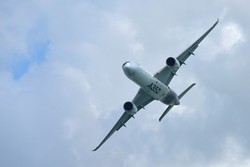Aircraft noise set to decrease further
On modern aircraft, passengers and crew breathe a mixture of fresh and recirculated air. This combination rather than fresh only allows the regulation of temperature, pressure and humidity. The air is bled from the engines and supplied to air conditioning units. It is then ducted into the cabin, circulated and eventually drawn into the lower fuselage where it is sucked out by the pressurisation outflow valve for the cycle to begin again. Besides creating a safe and comfortable environment, the aircraft air conditioning systems generate much noise. The EU-funded ALIAS (Acoustic Liners for air conditioning system) project worked on reducing the noise by improving acoustic liners. These liners present a major design challenge because of the need to address a wide range of conflicting requirements. Acoustic liners must provide high levels of noise reduction over a wide range of operating conditions. They should also be light and flexible to meet strict weight and tight space restrictions. With this in mind, ALIAS researchers dramatically reduced the time required to design and evaluate optimised acoustic liners for air conditioning systems by moving to a simulation-based design process. The project team developed a finite element code allowing high-fidelity modal analysis to estimate the acoustic liner impedance that maximises noise damping. It designed acoustic liners that best fit the target impedance by proposing semi-empirical models that link geometrical properties to the acoustic impedance attained. Results of the analytical tools that were used to predict noise dampening have been correlated with static tests performed on a test rig. ALIAS scientists confirmed the accuracy of theoretical predictions by comparing them with the acoustic impedance measured in situ for five different designs. The project team successfully built two large-scale prototypes and tested them in industrial settings. The measured acoustic attenuation was as high as expected in the target mid-frequency range, paving the way for exploitation of the results. Now that the performance of the proposed acoustic liners has been validated, ALIAS partners hope to use this know how to expand their use for various applications in aeronautics.
Keywords
Aircraft noise, ALIAS, acoustic liners, air conditioning, acoustic impedance, aeronautics

